‘First light’ for the Dark Energy Spectroscopic Instrument (DESI): as the installation phase nears completion, this new instrument is due to undergo final tests before starting to create a giant map of the sky in early 2020, a mission that is scheduled to run for five years. CEA, the French National Centre for Scientific Research (CNRS), Aix-Marseille University and French company Winlight System have played a significant role in the project to develop this international instrument which aims to scan the sky in an attempt to understand the effects of dark energy.
For the very first time, DESI, which is installed on the Mayall Telescope (Kitt Peak, Arizona), has trained its network of 5,000 optical fibre ‘eyes’ on the night sky in a bid to see its first light. This milestone marks the start of the instrument’s final commissioning campaign before it starts scientific observations in earnest in early 2020, a mission scheduled to run for five years.
It will record the spectrum in terms of ultraviolet, visible and infrared light from 5,000 objects at any one time. It is designed to focus automatically on a precise list of pre-selected galaxies and quasars. It will detect any light in these galaxies, breaking it down into multiple wavelengths in order to measure how far these objects are from Earth.
The international DESI collaboration project is led by the Lawrence Berkeley National Laboratory (Berkeley Lab), a US Department of Energy National Laboratory managed by the University of California. The team includes nearly 500 scientists at 75 institutions across 13 countries. The design of the spectrographs is the culmination of a collaboration between Berkeley Lab, CEA, French National Centre for Scientific Research (CNRS), and French company Winlight System, which specialises in precision optical components.
DESI is designed to measure the spectrum of 5,000 celestial objects every two minutes. It can scan five times as many objects twice as fast as the best existing instruments.
Over the next five years, DESI is intended to map the position and distance of 35 million galaxies and 2.4 million quasars covering one third of the sky. With DESI scientists will have the most detailed three-dimensional maps of the universe.
DESI will enable scientists to investigate how the universe evolved. The distance measurements obtained for the scanned objects will be compared with predictions based on the Standard Model of Cosmology. This model assumes the existence of an unknown component, which scientists refer to as ‘dark energy’. This energy is deemed to be responsible for the accelerating expansion of the universe over the past five billion years.
“DESI is a very significant advance compared to previous instruments in terms of the number of objects measured. By looking at very different objects from different eras, we can actually map the history of the universe and see what the universe is made of,” explains Nathalie Palanque-Delabrouille (CEA-Irfu (Institute of Research into the Fundamental Laws of the Universe), Paris Saclay), co-spokesperson for the DESI collaboration project.
Given that the light from each star takes a certain length of time to reach us, the maps created by DESI will provide access to how the universe evolved through the ages.
The most distant galaxies and quasars that are visible with current instruments take us back 11 billion years. By multiplying the number of objects analysed by 15 compared with existing data, DESI will make it possible to create the densest map over the largest area ever recorded.
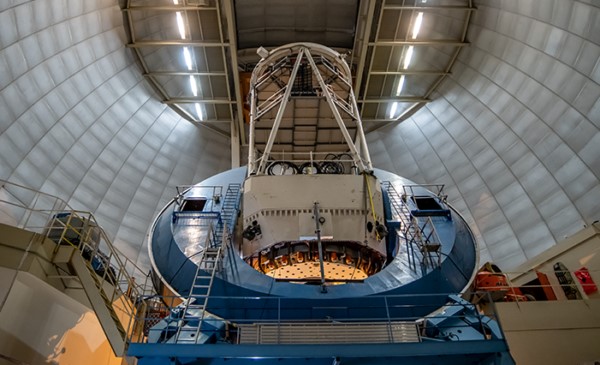
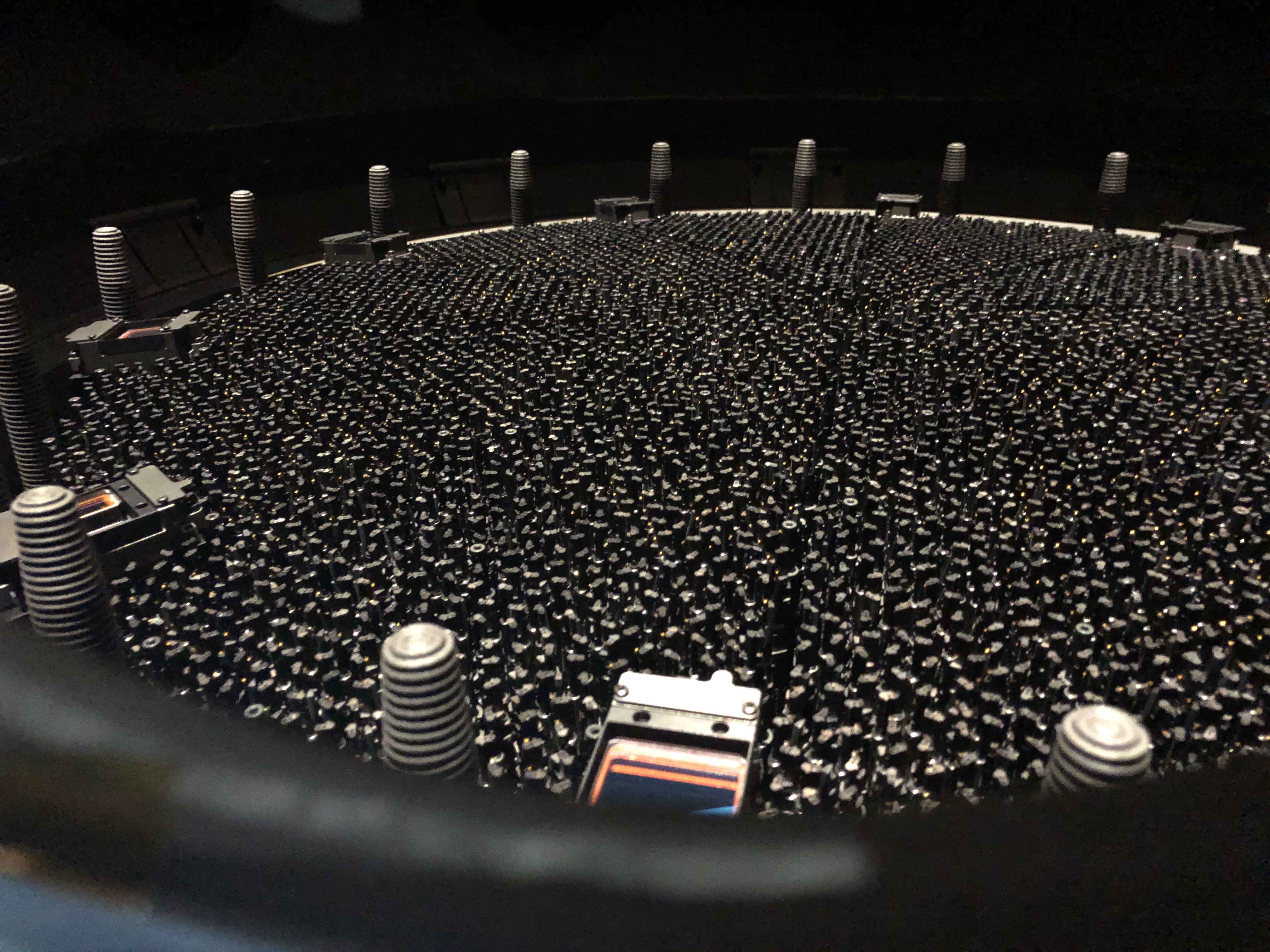
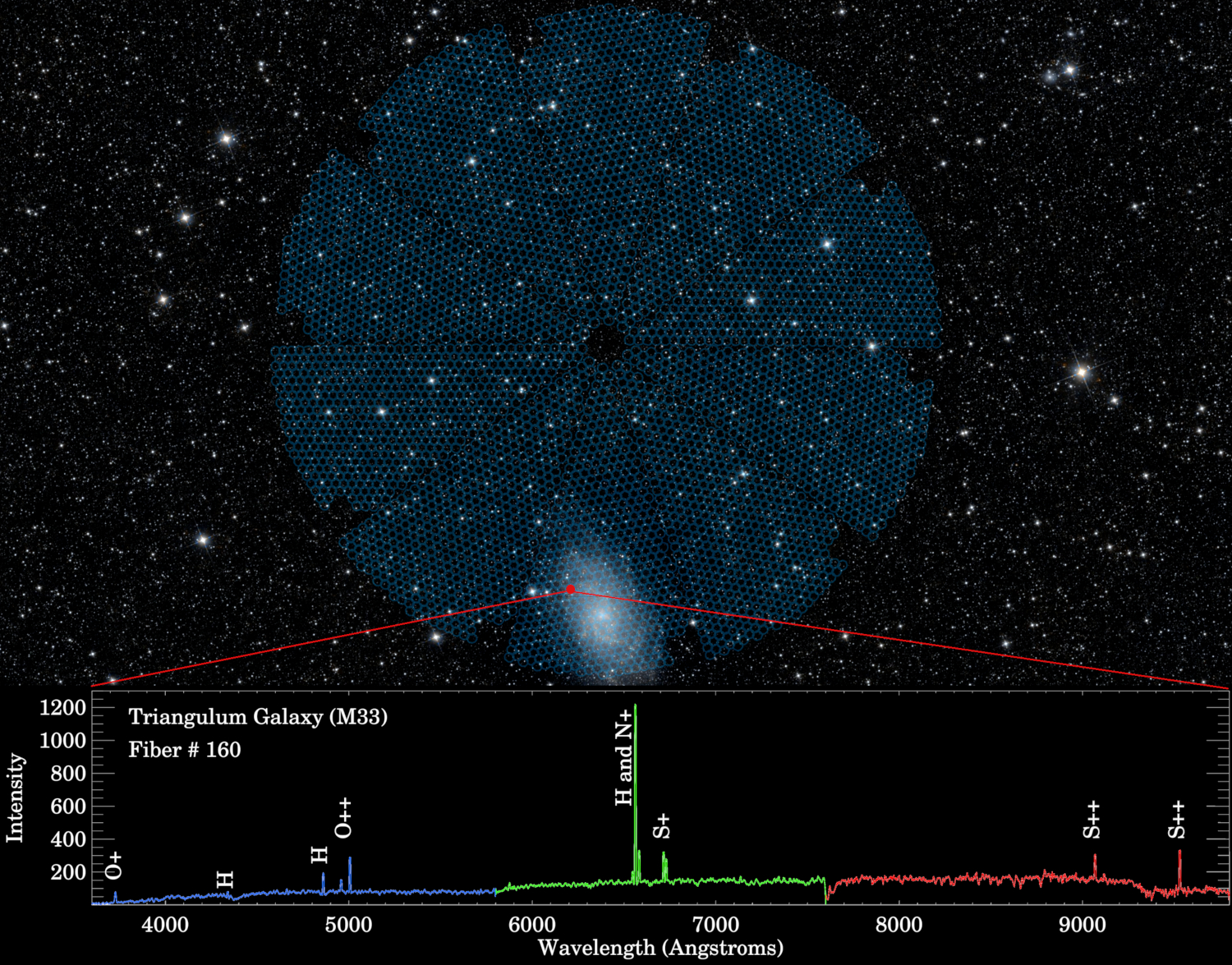
The international DESI collaboration project is led by the Lawrence Berkeley National Laboratory (Berkeley Lab), a US Department of Energy National Laboratory managed by the University of California. The team includes nearly 500 scientists at 75 institutions across 13 countries. The design of the spectrographs is the culmination of collaboration between Berkeley Lab, CEA, French National Centre for Scientific Research (CNRS), Aix-Marseille University and French company Winlight System, which specialises in precision optical components.
The DESI project commissioned Winlight System, based in Pertuis in south-eastern France, to design and build the ten spectrographs. Winlight has been a subsidiary of Bertin Technologies since 2017 and has been active in the high-performance optical components market since 2001, primarily for the astronomy, space, defence and synchrotron industries.
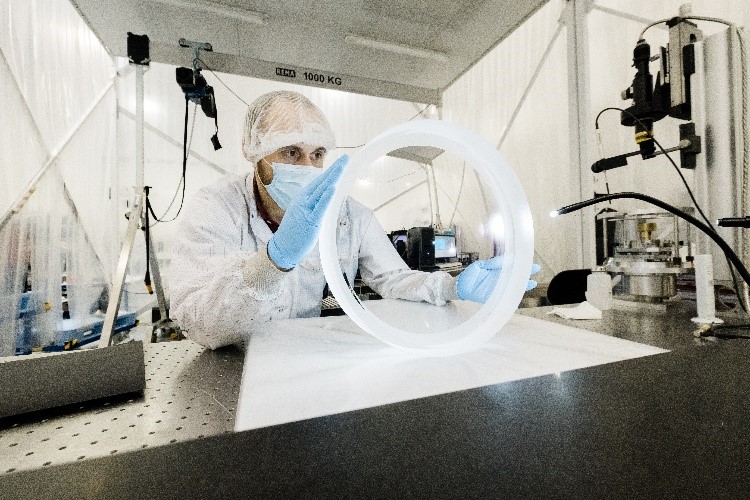
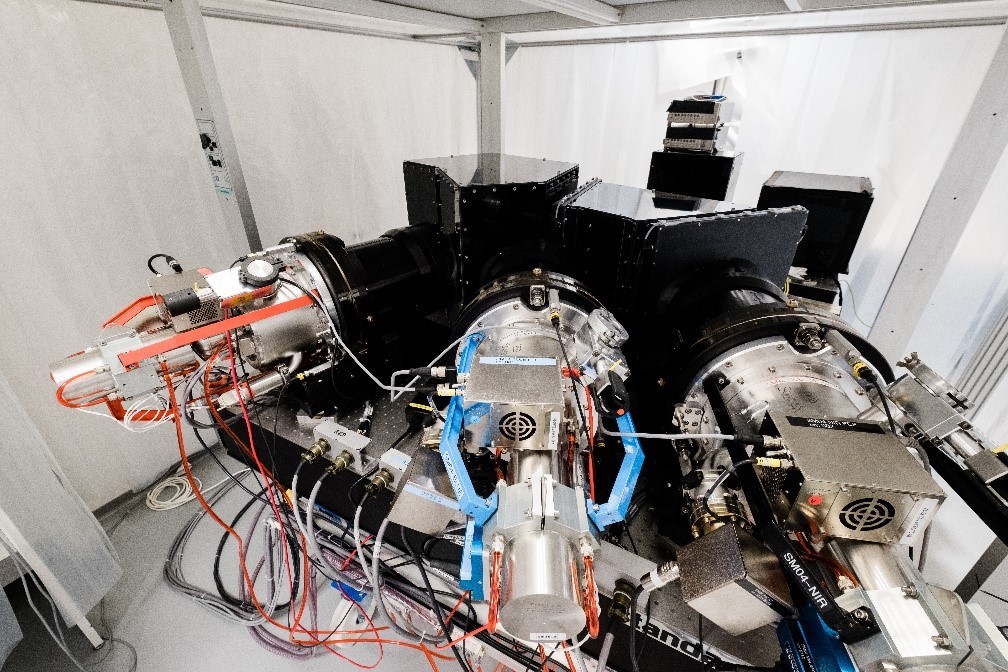
“This successful project is the culmination of close collaboration between scientific teams forming the DESI project consortium and an industrial company involved in a number of research programmes. This shows that it is possible to create a win-win partnership by bringing together French expertise to play a major role in an international project,” explains Philippe Godefroy, Director at Winlight.
Each spectrograph is equipped with three charge coupled device (CCD) light sensors, positioned within 15 microns during assembly. The Institute of Research into the Fundamental Laws of the Universe (CEA-Irfu, Paris-Saclay) is responsible for designing, assembling and monitoring the special cooling system required to optimise the performance of the CCD light sensors. Each CCD is placed in a cryostat with its own heat engine, a pulse tube designed by the Interdisciplinary Research Institute of Grenoble (CEA-Irig) and marketed by Thales.
“The CCD light sensors are the core of DESI. We were responsible for designing the cryomechanical system which holds these detectors and making sure they operate to an optimum level. Our teams assembled the 30 cryostats and positioned each of the CCDs with the required degree of accuracy”
Pierre-Henri Carton (CEA-Irfu), head of the DESI cryostat project.
“The CCD light sensors are the core of DESI. We were responsible for designing the cryomechanical system which holds these detectors and making sure they operate to an optimum level. Our teams assembled the 30 cryostats and positioned each of the CCDs with the required degree of accuracy,” explains Pierre-Henri Carton (CEA-Irfu), head of the DESI cryostat project.
CEA-Irfu teams were also in charge of final assembly of the cryostats, each with their CCD, in the spectrographs on the Winlight System site in Pertuis, Vaucluse.
Teams from the CNRS and partner universities (1) carried out optical adjustments on these assemblies. “Our role is to optimise the focusing system of each spectrograph and check that optical performance complies with the specifications. It takes four weeks to test each spectrograph and we have just started adjusting the last of the ten spectrographs,” explains Pierre-Eric Blanc, CNRS researcher at the Pytheas Research Institute (CNRS/Aix-Marseille University/IRD/Irstea). “To carry out these tests, we designed a calibrated light system for the spectrographs. We also designed and manufactured the calibration system for the instrument as a whole, which has just been fitted to the telescope,” adds Laurent Le Guillou, lecturer and researcher at Sorbonne University in the Laboratory of Nuclear and High-Energy Physics (LPNHE) (Sorbonne University/CNRS).
When this qualification stage comes to an end, the spectrographs are sent off to the Kitt Peak Observatory, where technical teams from CEA-Irfu carry out the final installation phase and chill down the cryostats ready for operation. A team from the Laboratory of Astrophysics of Marseille (AMU/CNRS/CNES) (2) then carries out final adjustments on the spectrographs. Eight of these devices are already installed, with the last two due to arrive by the end of the year.
“Now that this instrument is ready, we are about to enter the important phase of validating the algorithms used to select the targets to be observed by DESI. This is a key stage in the process, and one that is critical for the success of our ambitious research programme,” explains Christophe Yeche (CEA-Irfu), head of the team defining the process used to select the various types of targets to be observed by DESI, such as very bright galaxies, red light galaxies, emission-line galaxies and quasars.
“The first light is our reward for 10 years of hard work. This will allow us to further our understanding of dark energy and I am keen to see what surprises DESI has in store for us,” adds Christophe Magneville (CEA-Irfu), scientific team leader for the DESI cryostat project.
“The first light is our reward for 10 years of hard work. This will allow us to further our understanding of dark energy and I am keen to see what surprises DESI has in store for us”
Christophe Magneville (CEA-Irfu), scientific team leader for the DESI cryostat project.
The DESI installation project started back in February 2018 on the Nicholas U. Mayall Telescope at the Kitt Peak National Observatory near Tucson, Arizona. Over the past 18 months, the various components making up DESI have arrived on site from institutions throughout the world to be installed on the telescope. The first component to arrive was a lens assembly, where each lens has a diameter of one metre. Once installed on the telescope, each lens will provide a large field of view over 8 square degrees (or, in other words, 32 times the apparent surface of the full moon). Successful tests were carried out on this assembly in April. DESI’s focal plane, which has 5,000 robotic positioners that pivot in a choreographed ‘dance’ to focus individually on galaxies and quasars, is located at the top of the telescope.
These small robots, each holding a fibre-optic cable about the same width as an average human hair, are DESI’s eyes. It takes no more than two minutes to move from one configuration of 5,000 galaxies to the next.
In each pointing position, the light collected by the 5,000 optical fibres is directed to a series of ten spectrographs, which are in turn designed to break down the light from each object observed into wavelengths and record the spectrum in order to measure the precise distances involved.
(1) These include the Laboratory of Nuclear and High-Energy Physics (CNRS/Sorbonne University), the Centre for Particle Physics of Marseille (CNRS/Aix-Marseille University) and the Laboratory of Astrophysics of Marseille (LAM, AMU/CNRS/CNES).
(2) It is part of the Pytheas Research Institute.
| DESI is supported by the US Department of Energy's Office of Science; the US National Science Foundation, Division of Astronomical Sciences under contract to the National Optical Astronomy Observatory; the Science and Technologies Facilities Council of the United Kingdom; the Gordon and Betty Moore Foundation; the Heising-Simons Foundation; the French Alternative Energies and Atomic Energy Commission (CEA), the CNRS (French National Centre for Scientific Research) and its partner universities in France; the National Council of Science and Technology of Mexico; the Ministry of Economy in Spain; and DESI member institutions. The DESI scientists are honoured to be permitted to conduct astronomical research on Iolkam Du’ag (Kitt Peak), a mountain with particular significance for the Tohono O'odham Nation. View the full list of DESI collaborating institutions and learn more about DESI here: Desi.lbl.gov. |
• Structure and evolution of the Universe › Dark Universe Structure and evolution of the Universe › Evolution of the large structures and galaxies
• Institute of Research into the Fundamental Laws of the Universe • The Electronics, Detectors and Computing Division • The Particle Physics Division • The Systems Engineering Division
• BAO
